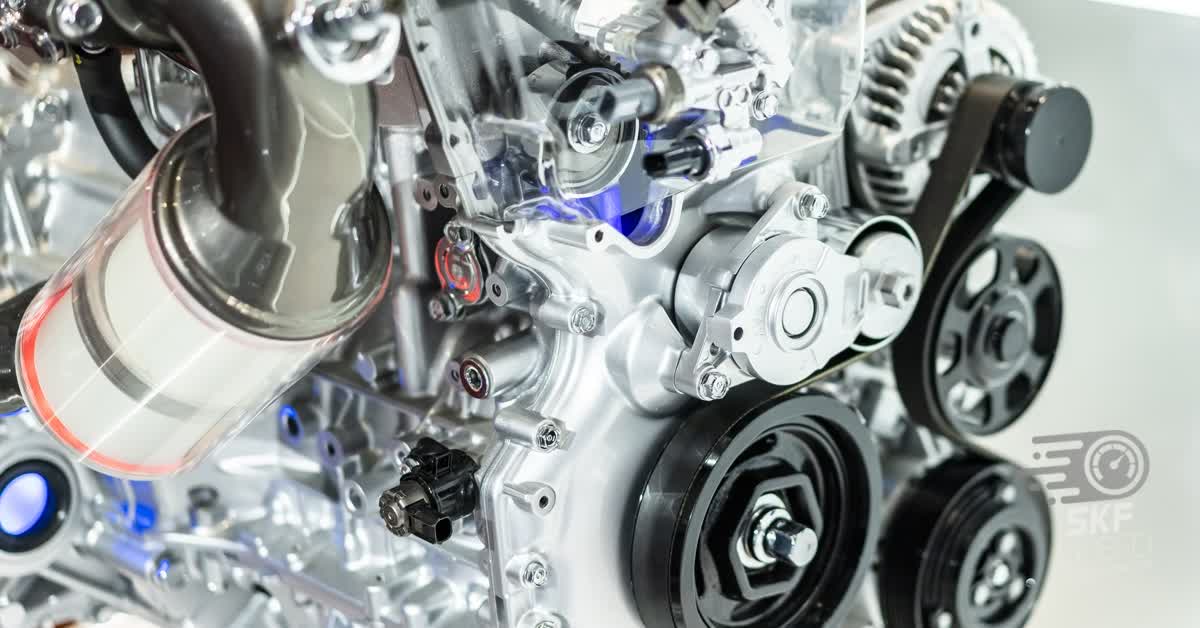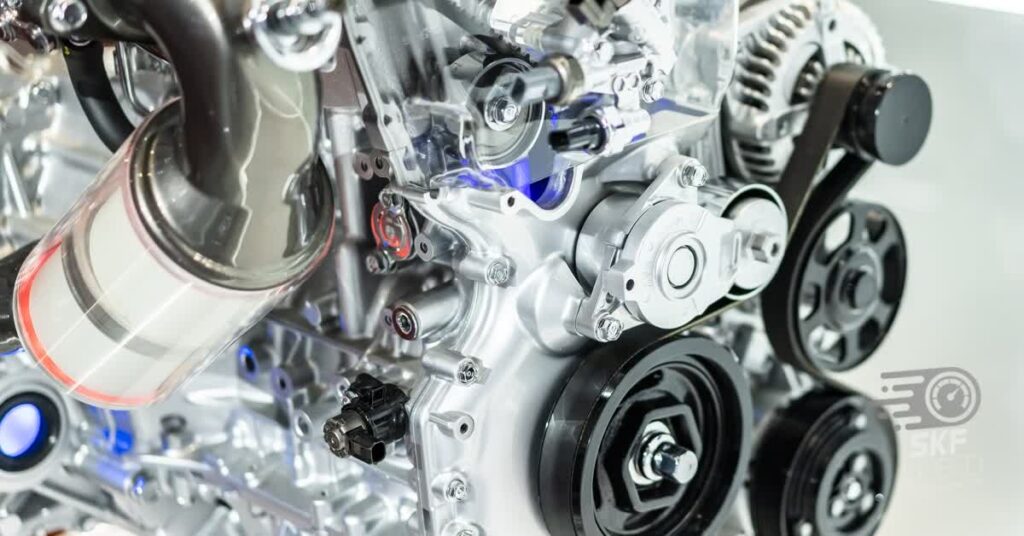Ever contemplated why a car’s odometer reading remains unchanged even after a new engine? It’s a common misconception that installing a new engine means resetting the vehicle’s mileage count. However, the odometer measures the distance covered by the entire vehicle, not just the engine.
Historically, the odometer’s integrity has been crucial in determining a vehicle’s value and reliability. Modern vehicles have sophisticated systems that store mileage data to prevent tampering. To maintain accuracy and trustworthiness, replacing the engine doesn’t alter this information, maintaining transparency for buyers and sellers alike.

Does replacing the engine reset mileage?
Many car owners wonder if replacing the engine resets the vehicle’s mileage. The answer is no, it does not. The mileage of a car is recorded by the odometer, which is connected to the transmission, not the engine. This means the odometer keeps track of the distance traveled by the vehicle as a whole. Replacing the engine has no effect on the odometer reading.
It’s important for vehicle owners and buyers to understand this because mileage is a critical factor in determining a car’s value. The odometer measures the entire lifespan of the vehicle, not just the engine. Keeping accurate mileage ensures transparency in vehicle sales. Buyers can trust the mileage displayed, knowing it reflects the true usage of the car. This practice helps maintain fairness in the market.
The main reason for not resetting the mileage with a new engine is to prevent fraud. Tampering with the odometer is illegal in many places. It is crucial to maintain honest records. This protects both buyers and sellers in the automotive market. By keeping the mileage intact, the integrity of the vehicle’s history is preserved.
Moreover, sophisticated systems in modern vehicles store mileage data to prevent tampering. Even after an engine replacement, these systems ensure the odometer reading remains unchanged. This technology enhances the accuracy and reliability of mileage data. Buyers can have peace of mind knowing the vehicle’s history is trustworthy. This helps in making informed purchasing decisions.
Exploring the relationship between engine replacement and vehicle mileage
When a vehicle undergoes an engine replacement, many people assume the mileage should reset, but that’s not the case. The odometer keeps track of the total distance the car has traveled, regardless of the engine. Even with a new engine, the car’s body and other components have already experienced significant use. Keeping the original mileage helps maintain the accuracy of the vehicle’s history. Otherwise, resetting the mileage could lead to misconceptions about the car’s overall condition.
Understanding this difference is crucial when buying or selling a car. Mileage plays a significant role in determining a vehicle’s resale value. An odometer reflects the wear and tear on the car as a whole, not just the engine. A car with lower mileage generally indicates less overall use. This can influence the price and buyer’s confidence in the purchase.
Modern cars have systems in place to track mileage accurately even after major repairs. These systems ensure the odometer reading remains accurate, preserving the vehicle’s history. Introducing new technologies has further minimized the risk of fraudulent activity. This transparency benefits everyone in the automotive market, building trust between buyers and sellers. It safeguards the integrity of used car sales.
Additionally, some legal guidelines govern how mileage is recorded and reported. Tampering with an odometer, including resetting it due to engine replacement, is often illegal. Adhering to these rules helps prevent deceitful practices. By understanding the relationship between engine replacement and mileage, car owners can make informed decisions. This knowledge helps maintain honesty and reliability in vehicle transactions.
The role of an odometer in measuring vehicle mileage
An odometer is a key component in any vehicle, responsible for tracking the total distance traveled. Installed within the dashboard, it displays the mileage in numbers. The primary purpose of an odometer is to provide an accurate measure of a vehicle’s usage. This information is crucial for maintenance schedules and assessing the car’s value. Without an accurate odometer, estimating a vehicle’s wear and tear would be challenging.
Odometers come in two main types: analog and digital. Analog odometers use rotating gears to display mileage, while digital ones rely on electronic systems. Despite these differences, both types serve the same fundamental purpose. In modern vehicles, digital odometers are more common due to their precision. The shift to digital has also made it harder to tamper with mileage readings.
Accurate mileage readings are essential for various reasons, including vehicle resale and maintenance. Buyers rely on odometer readings to make informed decisions about purchasing used cars. Lower mileage often equates to less wear and potentially fewer issues. Regular maintenance checks are also guided by the odometer, helping to schedule oil changes, tire rotations, and other services. Keeping track of mileage ensures the vehicle runs smoothly and safely.
Manufacturers have incorporated safeguards to prevent odometer fraud. Many modern odometers are connected to the car’s central computer system. This integration makes it difficult to alter the mileage without detection. Legal regulations also exist to protect consumers from odometer tampering. These measures help maintain trust in the used car market, ensuring that mileage readings are reliable and accurate.
Legal and ethical considerations in engine replacement and mileage reporting
When a vehicle’s engine is replaced, it raises important legal and ethical considerations. One primary concern is odometer tampering, which is illegal in many regions. Changing the mileage reading to appear lower than it actually is can deceive potential buyers. Accurate mileage reporting maintains fairness and transparency in the automotive market. This is essential for building trust between buyers and sellers.
Various laws exist to prevent odometer fraud. For instance, the U.S. has the Truth in Mileage Act, which requires accurate reporting of the vehicle’s mileage. Violating these laws can result in heavy fines and penalties. Such regulations help protect consumers from dishonest practices. They also ensure that the true condition of the vehicle is reflected in its mileage.
From an ethical standpoint, honesty in mileage reporting is crucial. Misrepresenting a vehicle’s mileage undermines trust and can lead to significant financial loss for buyers. Sellers have a responsibility to be truthful about the car’s history. Maintaining ethical standards benefits the community by promoting fair business practices. Buyers can make informed decisions based on accurate information.
Car dealerships and repair shops also play a role in upholding legal and ethical standards. They are often responsible for documenting and reporting mileage accurately when performing engine replacements. This documentation should be clear and accessible to buyers. Ensuring transparency in all vehicle transactions helps maintain integrity in the automotive industry. This fosters a healthier market for both consumers and businesses.
In addition to legal requirements, professional codes of conduct can guide ethical behavior. Automotive professionals who adhere to these codes contribute to a trustworthy marketplace. Upholding their commitment to honesty and accurate reporting enhances their reputation. This, in turn, attracts more customers who value integrity. Ultimately, legal and ethical considerations are intertwined in promoting fairness in vehicle transactions.
Impact of engine replacement on vehicle value and buyer perception
Replacing a vehicle’s engine can significantly affect its value and how buyers perceive it. On one hand, a new engine can be seen as a positive upgrade, potentially extending the car’s lifespan. This might attract buyers looking for reliable transportation. However, it’s crucial to consider the overall condition of the vehicle. Even with a new engine, high mileage and worn-out components can lower the car’s value.
Buyers often have mixed feelings about engine replacements. Some may see it as an advantage, thinking the car is almost like new again. Yet, others may be cautious, wondering why the engine needed replacement in the first place. They might fear hidden problems or previous neglect. Understanding these perceptions is vital for sellers to address buyers’ concerns effectively.
Price is another significant factor influenced by engine replacements. Sellers might price the car higher due to the new engine. Nonetheless, potential buyers will weigh this against the car’s overall mileage and condition. To make informed decisions, buyers often compare similar vehicles with and without engine replacements. Transparency in the maintenance history can aid in setting a fair price.
When advertising a car with a replaced engine, detailed records can be a strong selling point. Providing documentation of the engine replacement and any warranties can build buyer confidence. It shows the seller’s commitment to maintaining the vehicle. This transparency helps in reassuring potential buyers about the car’s reliability. Trust plays a crucial role in successful transactions.
While a new engine can enhance a car’s appeal, it’s not the sole factor buyers consider. They look at the overall package – including mileage, condition, and maintenance history. Ensuring all aspects of the vehicle are well-maintained will lead to better valuation. This comprehensive care increases the likelihood of a satisfactory sale for both parties. Balancing the benefits of a new engine with transparency in the car’s history is key.
Techniques and technologies used to ensure mileage accuracy post-engine replacement
Maintaining accurate mileage readings after an engine replacement involves several techniques and technologies. Modern vehicles utilize digital odometers linked to the car’s main computer. This connection makes it challenging to alter the mileage without leaving a trace. These systems help ensure that mileage remains accurate and reliable even after major repairs. This technology benefits both car owners and potential buyers.
Another method involves detailed record-keeping and documentation. Mechanics and dealerships must log all changes and repairs, including engine replacements. Keeping clear records helps verify the vehicle’s history. This documentation can then be shared with potential buyers. Transparent records build trust and ensure that the true mileage is known.
Advanced diagnostic tools also play a significant role in mileage accuracy. Mechanics can use these tools to read and verify the stored mileage data. These tools can detect any discrepancies or signs of tampering. Using advanced diagnostics ensures that the mileage displayed is genuine. This accuracy is crucial when evaluating a vehicle’s condition.
Some cars also feature tamper-proof seals and mechanisms on their odometers. These features prevent unauthorized access and modifications. Breaking these seals would indicate possible tampering, alerting both mechanics and buyers. Tamper-proof technology adds an extra layer of security for mileage accuracy. This helps uphold the integrity of mileage reporting.
Additionally, legal and regulatory frameworks support these technologies. Many regions mandate stringent penalties for odometer fraud. These laws work alongside technological measures to deter tampering. By combining legal regulations with advanced technologies, mileage accuracy can be effectively maintained. This holistic approach ensures fairness in the automotive market.
Incorporating multiple strategies ensures that vehicle mileage remains accurate after engine replacement. The combination of technology, record-keeping, and legal measures creates a comprehensive system. This helps maintain the vehicle’s value and assures buyers of the car’s true condition. By using these techniques, the trustworthiness of mileage reporting is preserved.
Conclusion
In summary, replacing an engine does not reset a vehicle’s mileage. The odometer keeps track of the entire distance a car has traveled, preserving its true history. This practice ensures transparency and accuracy for potential buyers and sellers.
Combining advanced technologies, thorough record-keeping, and legal measures effectively maintains mileage integrity. These efforts collectively uphold fairness in the automotive market. Accurate mileage reporting remains crucial for building trust and ensuring a vehicle’s true value.


Leave a Reply